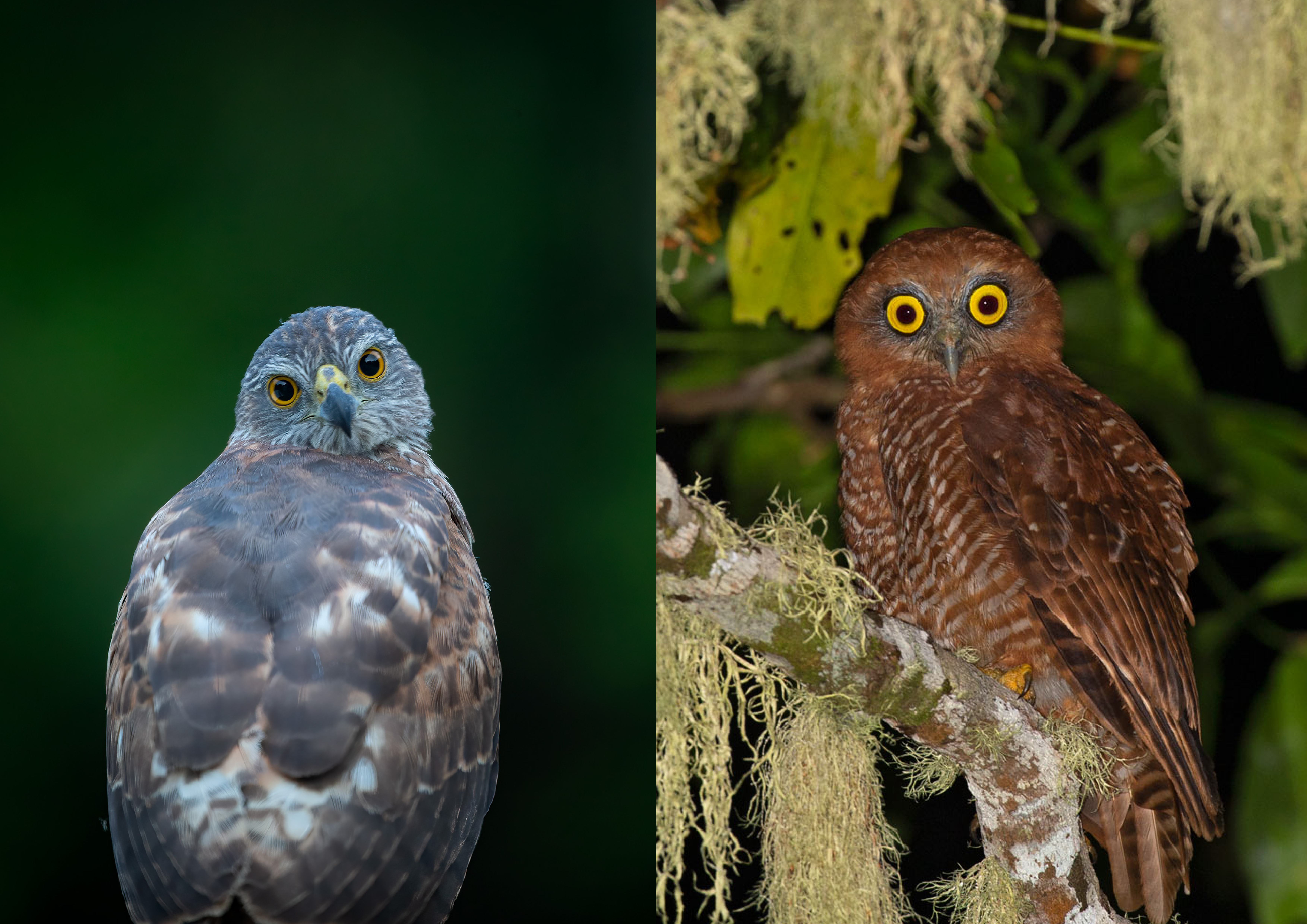Project start date: 01/10/2023
Project end date: 30/09/2027
NESP funding: $444,295 (GST-exclusive)
Little is known about the ecology of Christmas Island’s 2 endemic apex predators – the Christmas Island hawk-owl (Ninox natalis) and Christmas Island goshawk (Accipiter fasciatus natalis). This impedes the effective conservation management of these threatened and ecologically important species.

Christmas Island goshawk (left) and Christmas Island hawk-owl (right). Photos: Rohan Clarke.
The hawk-owl (boobook) and goshawk are integral parts of the island’s ecosystem. Christmas Island as a priority place under the Australian Government’s Threatened species action plan 2022–2032, and the goshawk is listed as a priority species under the same plan.
To conserve these species, this project is collecting new data on their population sizes, habitat preferences, diet and genetic diversity.
This information is critical for supporting effective management of the 2 species. In the case of the hawk-owl, it’s also relevant to understanding the importance of hollow-bearing trees for some other bird species on Christmas Island. For the goshawk, this information will help to resolve its taxonomic relationship with other Accipiter species.
This project is combining field-based and lab-based methods to determine the status, health and critical habitat requirements of these species and developing robust designs for monitoring population trends. Results will inform the spatial targeting of habitat management on Christmas Island, the management of invasive prey species (i.e. black rats), and direct conservation interventions for the 2 raptors.
Key research areas
To address the challenges on conserving apex raptor species on Christmas Island, this project is:
Project leader
The project is being led by Professor Justin Welbergen from Western Sydney University, Associate Professor Rohan Clarke from Monash University and Dr Nicholas Macgregor from Parks Australia. This project will contribute to 2 cross-cutting initiatives:
Contact
For further information, contact j.welbergen@westernsydney.edu.au, rohan.clarke@monash.edu, nicholas.macgregor@dcceew.gov.au or nesplandscapes@uwa.edu.au.
Research users
People